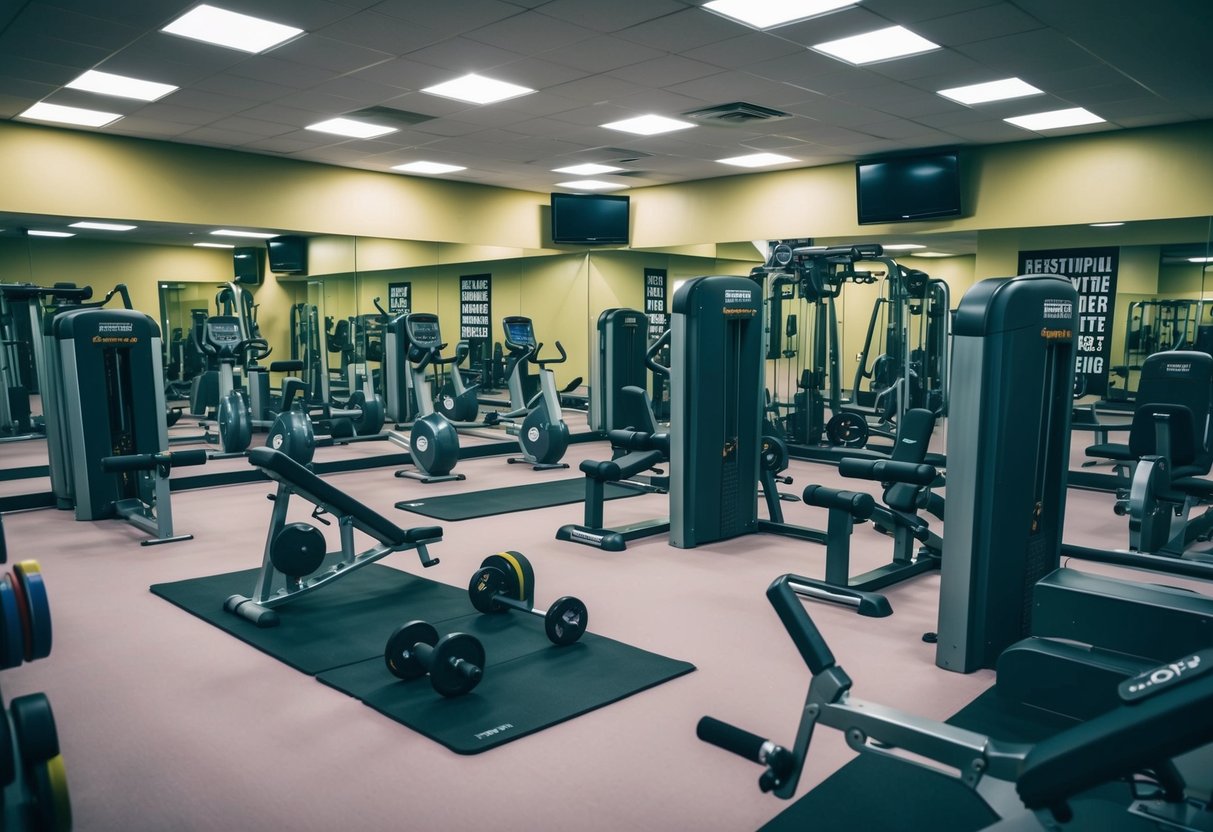
Workout Components and Structure

This section provides insight into organizing a circuit training workout, focusing on balance, exercise selection, and combining strength with cardio. These elements are critical in developing an effective routine that targets all muscle groups and enhances overall fitness.
Creating a Balanced Routine
Creating a balanced routine involves including a variety of exercises targeting different muscle groups and incorporating both strength and cardio components for a full-body workout. It’s important to consider warm-up exercises as they help in preparing the body by increasing the heart rate and improving blood flow to muscles.
In addition to warm-up, alternating between upper and lower body exercises ensures no single muscle group is overworked. Balance can also be achieved by varying the intensity of exercises, allowing the muscles time to recover while maintaining an elevated heart rate throughout.
Using a mix of compound and isolation moves can enhance the effectiveness. Compound exercises, which engage multiple muscle groups simultaneously, can boost muscle groups’ endurance efficiently. Ensuring every workout component is aligned with fitness goals leads to greater improvements.
Exercise Selection and Order
Exercise selection and order greatly impact the effectiveness of a workout. Choosing a diverse array of exercises helps target various muscle groups and prevents monotony. Including resistance training boosts muscle strength while varying the exercise order can keep the routine engaging.
An efficient circuit might start with a few high-intensity cardio exercises to elevate the heart rate. Following up with resistance training moves like squats or push-ups helps maintain momentum. Ending with less intense flexibility or core exercises can aid in muscle cooldown and prevent injury.
The sequence of exercises should be designed to prevent fatigue and enhance performance. By strategically organizing workouts, one can maximize the benefits of each session.
Incorporating Strength and Cardio
Incorporating both strength and cardio exercises into a circuit training routine enhances overall physical fitness by building muscle strength and boosting cardiovascular endurance. Cardio exercises, such as jumping jacks or running, increase heart rate and improve stamina.
Strength training exercises focus on resistance to improve muscle mass. This balance provides a comprehensive workout experience, engaging both muscular and cardiovascular systems.
By alternating between these components, the workout remains dynamic and challenging. Structuring circuits with a clear alternation between strength and cardio ensures continuous movement and optimal energy use. This method supports varied fitness goals, leading to well-rounded development.
Tailoring Circuits for Goals and Needs
Circuit training offers diverse options that can be adjusted to meet specific outcomes. Whether aiming for weight loss, muscle gain, cardiovascular improvement, or enhanced flexibility, there is a structure available to suit these needs.
Focus on Weight Loss
Circuit training targeted at weight loss often prioritizes high-intensity exercises. These are performed with minimal rest between exercises to keep the heart rate elevated. This method enhances calorie burn and aids in reducing body fat more effectively.
Typically, exercises such as jumping jacks, burpees, and mountain climbers are included. These promote continuous movement, boosting cardiovascular fitness. Combining cardio with light resistance exercises like kettlebell swings can improve muscular endurance.
A typical weight-loss circuit might include 8-10 exercises, repeated for about 30 seconds each. The goal is to maintain a quick pace without sacrificing proper form. Participants should ensure they listen to their body to prevent overexertion.
Circuits for Muscle Gain
For those focusing on muscle gain, circuits should incorporate resistance exercises with heavier weights and fewer repetitions. This approach enhances muscular strength and hypertrophy by targeting specific muscle groups.
Exercises like squats, bench presses, and deadlifts are fundamental, often supplemented with isolation movements such as bicep curls. Rest periods between sets are slightly longer than in a weight-loss circuit, often ranging from 30 to 90 seconds.
To maximize effectiveness, circuits can target different muscle groups on alternate days, allowing for adequate recovery. Consistency and progressive overload—gradually increasing weight—are crucial to achieving muscle gain goals.



